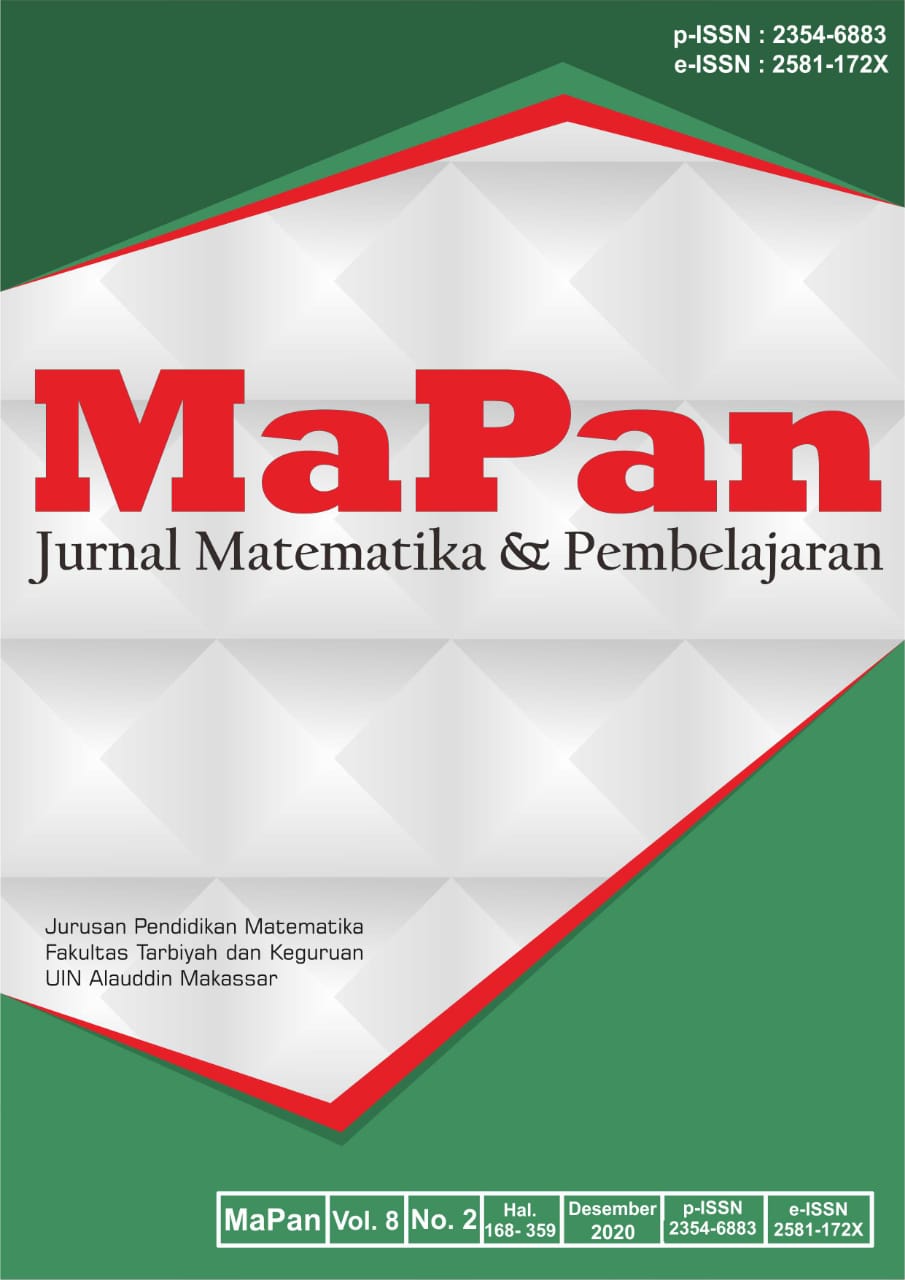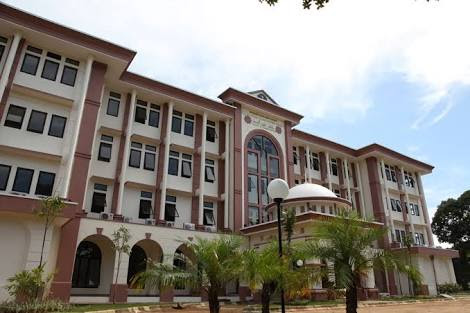ANALYSIS OF HISTORICAL BUILDINGS NGAWEN TEMPLE IN MAGELANG
Abstract
The analysis of historical buildings Ngawen Temple has a purpose of knowing the history of Ngawen Temple and knowing the approach to the Ngawen Temple's geometry. This research type is descriptive research with a qualitative approach. The subject of this research is the historical building of Ngawen Temple. The data collection techniques used in this research are interviews and documentation (observation) directly. The interview was done with the temple officers around the building, and the documentation was taken directly. The data analysis technique is done by analyzing the buildings related to the geometry, such as the building's shape on the Ngawen Temple. The results of this study were obtained; namely, Ngawen Temple set in Buddhism. The Ngawen Temple complex consists of 5 (five) temples that line the parallel from north to south. Temple building facing the east. From the south of Ngawen Temple I, II, III, IV, and V, each temple plans the square. One of Ngawen Temple's uniqueness is the existence of 4 lion statues in every corner of temple II and Candi IV. Another uniqueness is the temple's architecture, found in a lion's statue that supports the four sides of the temple building reconstructed from the five buildings. The lion statue's carved style resembles the lion symbol of Singapore's country and serves the rainwater that comes out through the statue's mouth. The Ngawen Temple's shape resembles the cuboid's geometry, the rectangular pyramidal frustum, and the rectangular pyramid.
Downloads
References
Abi, A. M. (2017). Integrasi Etnomatematika dalam kurikulum matematika sekolah. JPMI (Jurnal Pendidikan Matematika Indonesia), 1(1), 1-6. https:// doi.org/10.26737/jpmi.v1i1.75.
Albanese, V., & Perales, F. J. (2015). Enculturation with etnomathematical micro project: from culture to mathematics. Journal of Mathematics & Culture, 9(1), 1–11. http://dx.doi.org/10.30738/union.v8i1.6384.
Almansur, F., & Ghony, D. (2012). Metodologi penelitian kualitatif. Yogyakarta: Ar-Ruzz Media.
Arikunto, S. (2010). Prosedur penelitian: suatu pendekatan praktik. Jakarta: Rineka Cipta.
Astuningtyas, E. L., Wulandari, A. A., & Farahsanti, I. (2018). Etnomatematika dan pemecahan masalah kombinatorik. Jurnal Math Educator Nusantara, 3(2), 111–118. https://doi.org/10.29407/jmen.v3i2.907.
Basuki, S. (2006). Metode penelitian. Jakarta: Wedatama Widya Sastra.
Cresswell, J. (1998). Research design: qualitative & quantitative approach (Thousand O). CA: Sage Publications.
D'Ambrosio. (1985). Ethnomathematics and its place in the history and pedagogy of mathematics. For the Learning of Mathematics, 5(1), 44–48. Retrieved from https://flm-journal.org/Articles/72AAA4C74C1AA8F2 ADBC208D7E391C.
Danim, S. (1995). Media komunikasi pendidikan. Jakarta: Bumi Aksara.
Djadi, M., Minggi, I., Ja'faruddin, Zaki, A., & Sidjara, S. (2017). Sumber belajar penunjang PLPG 2017 mata pelajaran paket keahlian matematika bab x bangun datar. Jakarta: Kementerian Pendidikan dan Kebudayaan Direktorat Jenderal Guru dan Tenaga Kependidikan.
Faizah, R. S. N., Andreyanto, F., Romadhoni, V. D., Rouf, A., & Pamungkas, M. D. (2020). Etnomatematika: analisis benteng vredeburg ditinjau dari segi geometri. Alauddin Journal of Mathematics Education, 2(1), 64–70. Retrieved from http://journal.uin-alauddin.ac.id/index.php/ajme/ article/view/13614.
Fuadiah, F. N. (2009). Pendekatan pendidikan matematika realistik Indonesia di SD Negeri 179 Palembang. Jurnal Pendidikan Matematika, 3(2), 73–84. https://doi.org/10.22342/jpm.3.2.329.
Hafizin, M. A., Tendri, M., & Kusumawati, N. I. (2018). Analisis kemampuan spasial siswa pada geometri kubus dan balok di Kelas IX SMP Negeri 03 Pulau Beringin. Jurnal Pendidikan Matematika, 3(2), 61–65. Retrieved from http://ejournal.unitaspalembang.ac.id/index.php/nabla/article/ view/92.
Hardiarti, S. (2017). Etnomatematika: aplikasi bangun datar segiempat pada candi Muaro Jambi. Aksioma : Jurnal Matematika dan Pendidikan Matematika, 8(2), 99–109. https://doi.org/10.26877/aks.v8i2.1707.
Irawan, A., & Idris, M. (2018). Seni perhiasan dalam kebudayaan mataram kuno sebagai sumber pembelajaran sejarah (studi ikonografi relief Candi Borobudur). Kalpataru: Jurnal Sejarah Dan Pembelajaran Sejarah, 3(1), 11–24. http://dx.doi.org/10.31851/kalpataru.v3i1.1606.
Irsyad, M., Sujadi, A. A., & Setiana, D. S. (2020). Eksplorasi ethnomatika pada candi Asu. UNION : Jurnal Pendidikan Matematika, 8(1), 11–19. https://doi.org/10.30738/union.v8i1.7609.
Karen, K. (1990). Becoming attached: unfolding the mystery of the infant-mother bond and its impact on later life. New York: Warner Books.
Keitel, C., Damerow, P., Bishop, A., & Gerdes, P. (1989). Mathematic; education and society (science and technology education document series No 35). Paris: UNESCO.
Khayat. (2020). Bangun datar pada benteng Van Der Wijck Gombong Jawa Tengah. Jurnal Pendidikan Matematika, 8(1), 121–129. https://doi.org/10.30738/union.v8i1.6384.
Marsigit, M., Setiana, D. S., & Hardiarti, S. (2018). Pengembangan pembelajaran matematika berbasis etnomatematika. Prosiding Seminar Nasional Pendidikan Matematika Etnomatnesia. Yogyakarta.
Oktaviani, U., Nafisah, S., Apriliyani, M. N., Susanti, E., & Pamungkas, M. D. (2019). Lawang Sewu dalam sudut pandang geometri. Jurnal Pendidikan Matematika, 2(1), 113–131. http://dx.doi.org/10.21043/jpm.v2i1.6348.
Pradana, W. (2019). Museum benteng Vredeburg Yogyakarta. Retrieved from https://tribunnewswiki.com/2019/06/16museum-benteng-vredeburg yogyakarta.
Rachmawati, I. (2012). Eksplorasi etnomatematika masyarakat Sidoarjo. MATHEdunesa, 1(1). Retrieved from https://jurnalmahasiswa.unesa. ac.id/index.php/mathedunesa/article/view/249.
Sirumapea, A., Maesaroh, S., & Saputro, K. E. (2020). Perancangan game petualangan mengenal candi-candi di Magelang. Academic Journal of Computer Science Research, 2(1), 8–14. Retrieved from https://journal. stmikglobal.ac.id/index.php/AJCSR/article/view/261.
Sugiyono. (2015). Metode Penelitian Pendidikan: Pendekatan kuantitatf, kualitatif, dan R&D. Bandung: Alfabeta.
Widyaningsih, E., Septena, V. A., & Pamungkas, M. D. (2020). Analisis bangunan bersejarah panggung krapyak terhadap geometri. UNION: Jurnal Ilmiah Pendidikan Matematika, 8(1), 111–119. http://dx.doi.org/10.30738/union.v8i1.6377.
Zhang, W. & Zhang Q. (2010). Ethnomathematics and its integration within the mathematics curriculum. Journal of Mathematics Education, 3(1). 151-157. Retrieved from http://educationforatoz.com/images/_12_Weizhong_ Zhang_and_Qinqiong_Zhang.pdf.
Copyright (c) 2020 Rizki Sariningtias, Reza Indriani, Anisa Solihati, Alya Kamila, Megita Dwi Pamungkas

This work is licensed under a Creative Commons Attribution 4.0 International License.


